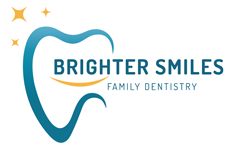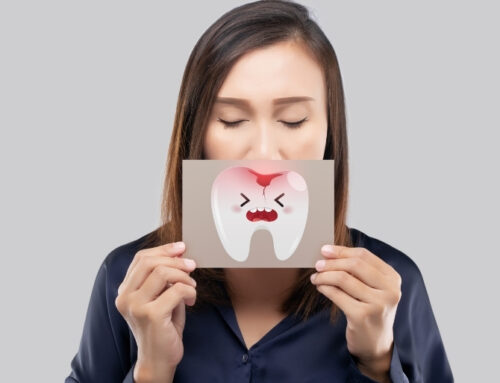If your jaw clicks, aches, or locks up when you try to chew, it’s easy to start wondering what’s going on. For many people, the answer is TMJ disorder — short for temporomandibular joint disorder.
That’s the name for problems with the joint that lets your jaw open, close, and move side to side. When it’s not working right, you can end up with jaw pain, stiffness, or that annoying “pop” every time you yawn.
The reasons vary. Some people get it after a jaw injury. Others from arthritis, grinding their teeth, or even stress that makes them clench their jaw without realizing it.
Whatever the cause, TMJ symptoms can turn everyday things — eating, talking, laughing — into a challenge.

At Brighter Smiles Family Dentistry in West Des Moines, we see this all the time, and we help patients find TMJ treatment options that make daily life comfortable again.
In this guide, we’ll break down what TMJ disorder is, how to spot the signs, the most common TMJ causes, and the treatments for TMJ disorder that might work for you.
Quick Navigation – TMJ Disorder Topics
Understanding TMJ and TMJ Disorders
What Is the Temporomandibular Joint (TMJ)?
If you put your fingers just in front of your ears and open your mouth, you’ll feel the temporomandibular joint moving.
That’s your TMJ — the small joint that connects your lower jaw to the side of your head and lets it move in all the directions you need to eat, talk, laugh, and yawn.
It’s easy to forget it’s there until something feels off. A dull ache when you chew. A sharp twinge when you yawn too wide. Or that deep, nagging TMJ jaw pain that just doesn’t seem to go away.
What Is TMJ Disorder?
TMJ disorder simply means this joint — or the muscles and tissues around it — aren’t working the way they should.
It might be swollen, strained, or out of alignment, and that can make everyday things like biting into a sandwich or finishing a conversation uncomfortable.
In short, if you’ve been wondering “what is TMJ disorder?”, it’s the catch-all term for when one of your body’s smallest but most hard-working joints starts giving you trouble.
Symptoms of TMJ Disorder
Common TMJ Symptoms
TMJ problems can show up in more ways than you might expect. Some are obvious, like a sharp or aching TMJ jaw pain when you chew or yawn. Others are easy to overlook until they start interfering with your day.
Common TMJ symptoms include:
- 1
A clicking, popping, or grinding sound when you move your jaw
- 2
Locking of the jaw, making it hard to open or close your mouth
- 3
Earaches or a feeling of fullness in the ears (without an infection)
- 4
Headaches or pain that extends to your temples or neck
- 5
Facial tenderness or swelling on one or both sides
- 6
Trouble chewing or an uncomfortable bite alignment
Everyone experiences TMJ disorder a little differently, which is why paying attention to early signs of TMJ disorder is important before the discomfort gets worse.
When to See a Doctor
Some jaw issues go away on their own, but there are times when getting professional help is the safer choice. You should see a dentist or doctor if you notice:
If you’re noticing these signs of TMJ disorder, an evaluation can help you find the cause and start treatment before the problem becomes harder to manage.
Causes and Risk Factors
Main Causes
When it comes to TMJ causes, there’s rarely just one. For some, it starts after a direct hit to the jaw. For others, it’s the slow wear-and-tear from arthritis or years of grinding teeth at night.
Stress can also sneak in as a culprit — clenching your jaw during a tough workday without even realizing it.
And then there’s posture. Hours hunched over a laptop or looking down at a phone can throw off how your jaw sits and moves, eventually leading to TMJ disorder.
Risk Factors
Some people are just more likely to deal with TMJ problems. Women tend to be diagnosed more often.
The condition often shows up between ages 20 and 40. If you’ve had a jaw injury, live with chronic stress, or already have arthritis, your risk climbs higher.
Teeth grinding, especially at night, is another big factor.
How to Lower Your Risk
You can’t control everything, but there’s a lot you can do to protect your jaw and lower the odds of developing or worsening symptoms.
Manage stress with breathing exercises or short breaks during the day. Keep your posture in check — especially if you spend hours at a desk.
If you grind your teeth, your dentist may advise a custom night guard to reduce jaw tension while you sleep.
At Brighter Smiles Family Dentistry, Dr. Fulton often recommends this as part of a broader plan to manage or help prevent TMJ symptoms.
And give your jaw a break from habits like chewing gum all day or biting your nails. Little changes like these can go a long way in preventing TMJ disorder from starting — or coming back.
Diagnosis
How TMJ Disorders Are Diagnosed
If your symptoms point toward TMJ disorder, your dentist or doctor will start with a detailed conversation about what you’ve been experiencing.
They’ll ask about when the pain started, how often it happens, and whether certain activities make it worse. They’ll also review your medical and dental history to see if past injuries, arthritis, or teeth grinding might be playing a role.
Next comes a physical exam. Your provider may gently press on different areas of your jaw and face to check for tenderness or swelling.
They’ll also listen and feel for any clicking or popping when you open and close your mouth, and they’ll test your jaw’s range of motion to see if it moves smoothly.
Common Tests Used
If the cause isn’t clear from the exam alone, imaging can help rule out or confirm a diagnosis. To confirm TMJ disorder, your dentist may order:
These tests can reveal structural problems, inflammation, or other issues that might be contributing to your symptoms, helping your provider create a treatment plan that’s tailored to you.
Treatments for TMJ Disorder
Once you know what’s causing your jaw problems, the next step is finding relief.
The right approach depends on how severe your symptoms are and what’s behind them, but most treatments for TMJ disorder start with the least invasive options and move up only if needed.
At-Home Care and Lifestyle Changes
For mild to moderate TMJ jaw pain, simple home adjustments can make a big difference. Switching to soft foods for a while gives your jaw muscles a break.
Applying a warm compress can ease tight jaw muscles, and using a cold pack afterward may help bring down swelling or dull sharper pain.
Gentle jaw stretches — done as instructed by your dentist or physical therapist — can also improve flexibility and reduce tension.
Medical and Dental Treatments
If at-home care isn’t enough, professional TMJ treatment options can provide more targeted relief. These may include:
Your dentist will work with you to choose the right combination based on your specific diagnosis and needs.
Surgical and Advanced Options
For severe cases that don’t respond to other methods, there are specialized treatments for TMJ disorder designed to address structural problems in the joint:
- 1
Arthrocentesis, a minimally invasive method to flush out the joint and reduce inflammation
- 2
Arthroscopy, which uses a small camera and tools to repair the joint
- 3
Open-joint surgery or joint replacement, reserved for rare situations where the damage is significant
These advanced options are typically considered only after more conservative measures have been tried.
Outlook and Prevention
What to Expect With TMJ Disorder
The good news is that most people see significant improvement once they find the right treatment plan.
For some, the relief is lasting; for others, TMJ disorder may come and go depending on stress levels, lifestyle habits, or underlying conditions. The key is to stay proactive so the problem doesn’t quietly creep back.
Can TMJ Disorder Be Cured?
There’s no single “cure” that works for every case, but TMJ disorder can often be managed so well that it barely impacts daily life.
With the right combination of self-care, dental guidance, and — if needed — medical treatment, many people can eat, speak, and yawn without discomfort.
The goal is long-term control and prevention, rather than waiting for symptoms to return.
Preventive Habits
If you’ve experienced signs of TMJ disorder before, keeping it from flaring up again is just as important as treating it the first time. Helpful habits include:
- 1
Improving posture — especially if you work at a desk for long hours
- 2
Avoiding jaw clenching during the day and addressing teeth grinding at night
- 3
Scheduling regular dental checkups so your provider can spot early changes in your bite or jaw movement
Small, consistent adjustments can help keep your jaw healthy and reduce the chances of future pain or stiffness.
Final Thoughts & Next Steps
Living with TMJ disorder can be frustrating, but it doesn’t have to be a permanent part of your life.
With the right guidance and care, many people are able to reduce discomfort, improve jaw movement, and get back to enjoying daily activities without constant reminders of their condition.
The most important step is taking action before TMJ jaw pain or stiffness gets in the way of your routine.
Remember — TMJ treatment isn’t one-size-fits-all. The most effective approach is shaped by your specific needs, which is why working with a skilled dental team can greatly improve your results.
If you’re experiencing TMJ symptoms or jaw pain, our team at Brighter Smiles Family Dentistry in West Des Moines offers gentle, effective TMJ treatment options tailored to your needs. Schedule an appointment today and take the first step toward a healthier, pain-free smile.

About the Author
Brighter Smiles Family Dentistry, led by Dr. Melani Fulton, upholds a legacy of exceptional dental care in West Des Moines, IA. Dr. Fulton, a University of Iowa College of Dentistry alumna, specializes in family dentistry and orthodontics. She succeeded Dr. Dan Todd in 2021, continuing a tradition of patient-centered, high-quality dentistry. Committed to gentle, modern treatments, Dr. Fulton’s approach is deeply rooted in community values, ensuring every patient feels like family at Brighter Smiles.




